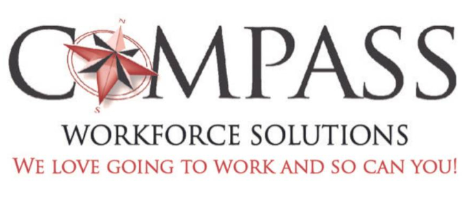
In today’s complex regulatory environment, small business owners face an ever-increasing burden of HR compliance requirements that can feel overwhelming for those without formal HR training. The regulatory landscape is constantly evolving, with new requirements emerging at the federal, state, and local levels, while existing regulations become increasingly complex and strictly enforced.
At Compass Workforce Solutions, we frequently observe well-intentioned business owners making costly compliance mistakes due to a lack of access to current, practical HR compliance services. Understanding and preventing these common mistakes can save thousands of dollars in penalties while creating stronger, more sustainable business operations.
The Rising Stakes of HR Compliance Violations
The financial and operational impact of compliance violations has intensified significantly as enforcement agencies increase audit activities and penalties continue to escalate. What many small business owners don’t realize is that compliance violations often cascade, with one issue triggering additional investigations across multiple regulatory areas.
Modern enforcement approaches focus on patterns of violations rather than isolated incidents, meaning that businesses with compliance gaps in one area often face scrutiny across their entire human resources (HR) function. This comprehensive approach can transform minor oversights into major business disruptions that threaten operational stability and financial viability.
The true cost of violations extends far beyond direct financial penalties to include legal fees, management distraction, employee relations problems, and reputation damage that can impact recruitment and customer relationships for years.
Common HR Compliance Violations and Their Costs
| Violation Type | Potential Financial Penalty | Additional Consequences | Prevention Cost | ROI of Prevention |
| Wage & Hour Violations | Back pay + liquidated damages | Legal fees, DOL audits | Policy development, training | 10:1 or higher |
| Employment Discrimination | Compensatory/punitive damages | Reputation damage, EEOC investigation | Training, proper documentation | Significant protection |
| I-9 Compliance Failures | Up to $2,156 per violation | ICE audits, business disruption | Verification systems, training | High ROI |
| FMLA Violations | Individual and liquidated damages | DOL investigation, employee relations issues | Policy development, manager training | Strong return |
| Safety Violations | Citations and mandatory corrections | Workers’ comp increases, productivity loss | Safety programs, regular compliance | Measurable savings |
Mistake #1: Misclassifying Employees and Independent Contractors
Employee classification represents one of the most costly and common compliance mistakes small businesses make. The distinction between employees and independent contractors has become increasingly scrutinized as regulatory agencies crack down on misclassification that reduces tax revenue and denies workers proper protections.
Misclassification typically results from misunderstanding the complex legal tests that determine proper worker status rather than intentional fraud, but the financial consequences remain severe regardless of intent. The Department of Labor, IRS, and state agencies each apply different criteria for classification, and failing any test can result in significant penalties and back payments.
Red Flags That Indicate Potential Misclassification
- Independent contractors performing core business functions
- Workers with no other clients or income sources
- Providing contractors with company equipment and detailed work instructions
- Contractors working set schedules in company locations
- Converting employees to contractors without substantial job duty changes
- Similar work performed by both employees and contractors
Understanding the Legal Tests
Different agencies apply various tests for worker classification, creating complexity that requires comprehensive analysis rather than simple checklists. The IRS employs a 20-factor test that examines behavioral control, financial control, and the type of relationship, while the Department of Labor applies an economic realities test that focuses on economic dependence.
State agencies often have additional requirements that may be more restrictive than federal standards. California’s ABC test, for example, requires that contractors perform work outside the usual course of business, creating challenges for businesses that rely heavily on contractor relationships.
Mistake #2: Inadequate Wage and Hour Compliance
Wage and hour violations represent another frequent and costly compliance area where well-intentioned flexibility often creates significant legal problems. The Fair Labor Standards Act (FLSA) and state wage laws establish specific requirements for overtime payments, meal breaks, record-keeping, and employee classification that many small businesses inadvertently violate.
Common violations include misclassifying employees as exempt from overtime requirements, failing to include bonuses and commissions in overtime calculations, and allowing employees to work “off the clock” during meal breaks or outside scheduled hours.
7 Common Wage and Hour Violations to Avoid
- Misclassifying employees as exempt from overtime requirements
- Failing to include bonuses and commissions in overtime calculations
- Allowing employees to work “off the clock” or during meal breaks
- Inadequate time-keeping records and documentation
- Improper handling of travel time and remote work hours
- Failing to pay for required training and meeting time
- Incorrect calculation of regular rate for overtime purposes
Creating Compliant Timekeeping Systems
Accurate timekeeping systems are crucial for ensuring wage and hour compliance and providing protection during investigations. These systems must capture all working time, including brief periods of work outside scheduled hours, time spent on work-related activities, and time spent in required training or meetings.
Technology solutions can improve accuracy while reducing administrative burden through automated time tracking, exception reporting, and integration with payroll systems. However, technology must be implemented with proper policies and training to ensure compliance.
Remote work arrangements create additional timekeeping challenges that necessitate clear policies regarding the recording of work time, meal breaks, and after-hours communications. Employees must understand their responsibility to record all working time, regardless of location, accurately.
Mistake #3: Poor Documentation and Record-Keeping Practices
Inadequate employment records create vulnerability across multiple compliance areas and make defending employment decisions nearly impossible when challenges arise. The adage “if it isn’t documented, it didn’t happen” proves particularly true in employment matters, where documentation often determines case outcomes.
Many small businesses maintain basic personnel files but miss critical documentation requirements that create compliance risks and legal exposure. Different regulatory areas require specific documentation with varying retention periods, creating complexity that overwhelms many small business owners.
Critical Documentation Often Missing from Employee Files
- Properly completed and verified I-9 forms with supporting documentation
- Signed acknowledgments of policy updates and handbook revisions
- Performance evaluation records and disciplinary action documentation
- Training completion records and safety instruction acknowledgments
- Leave administration records, including medical certifications and return-to-work clearances
- Wage and hour record’s including time sheets and pay calculation documentation
Establishing Compliant Record-Keeping Systems
Effective record-keeping systems organize documentation by category and retention requirements, ensuring that confidential information receives the appropriate protection. Medical information must be maintained separately from general personnel files with restricted access controls.
Digital document management can enhance efficiency while ensuring compliance with retention requirements through automated retention schedules and secure storage. However, digital systems must include appropriate backup procedures and access controls to ensure document integrity.
Regular file audits help identify documentation gaps and ensure compliance with retention requirements. These audits should be scheduled systematically rather than conducted only when problems arise.
Mistake #4: Inconsistent Policy Application and Communication
Policy inconsistencies create legal liability and employee relations problems that can be easily prevented through structured approaches to policy development and implementation. The inconsistent application of policies often results in discrimination claims and creates workplace tension that negatively impacts productivity and morale.
The problem typically stems from informal policy development, inadequate manager training, and a lack of systematic policy review and communication. Many small businesses create policies reactively in response to specific problems without considering broader implications or ensuring consistent application.
5 Steps to Ensure Consistent Policy Implementation
- Regular policy review and update schedules tied to regulatory changes
- Manager training on proper policy interpretation and application
- Documentation requirements for policy exceptions and unusual circumstances
- Employee communication systems that ensure policy awareness and understanding
- Audit procedures that identify and correct inconsistent applications
Building Effective Policy Communication Systems
Effective communication goes beyond distributing policy documents to ensure understanding and acknowledgment. Interactive communication methods, such as meetings, training sessions, and Q&A opportunities, enhance comprehension and demonstrate a commitment to compliance.
Employee acknowledgment systems should document not just receipt of policies but understanding of expectations and consequences. Digital acknowledgment systems can streamline this process while ensuring the required documentation is maintained.
Mistake #5: Neglecting Required Training and Compliance Monitoring
Inadequate training and monitoring systems allow small compliance issues to become major problems by failing to identify and address violations before they result in complaints or investigations. Many compliance requirements include specific training obligations that businesses often overlook or implement inadequately.
Required training varies by jurisdiction and company size, with harassment prevention training now mandatory in many states. Beyond mandatory training, recommended programs in areas such as safety, documentation, and performance management offer both legal protection and operational benefits.
Establishing Systematic Training Programs
Effective training programs address both required topics and recommended areas that provide business value and legal protection. Training schedules should align with regulatory requirements while addressing business-specific risks and challenges.
Documentation of training completion provides important compliance protection and demonstrates good faith efforts to prevent violations. Training records should include the participant’s name, topics covered, completion dates, and the trainer’s credentials.
Manager training deserves special attention since supervisors make daily decisions that create compliance risks. Leadership development services can help managers understand their compliance responsibilities while building general management capabilities.
Building Your Compliance Success Strategy
HR compliance done right creates more than just protection against penalties—it builds a foundation for business success through clear expectations, consistent practices, and fair treatment that enhances employee engagement and organizational effectiveness.
Compass Workforce Solutions helps businesses create sustainable compliance systems that provide both protection and competitive advantage. Our systematic approach identifies priority areas and creates practical solutions that fit your business needs and budget.
Schedule an HR risk assessment today to identify potential compliance vulnerabilities and create a roadmap for systematic improvement. Or contact us to discuss comprehensive HR compliance services that provide the expertise and support your business needs to thrive in today’s complex regulatory environment.








